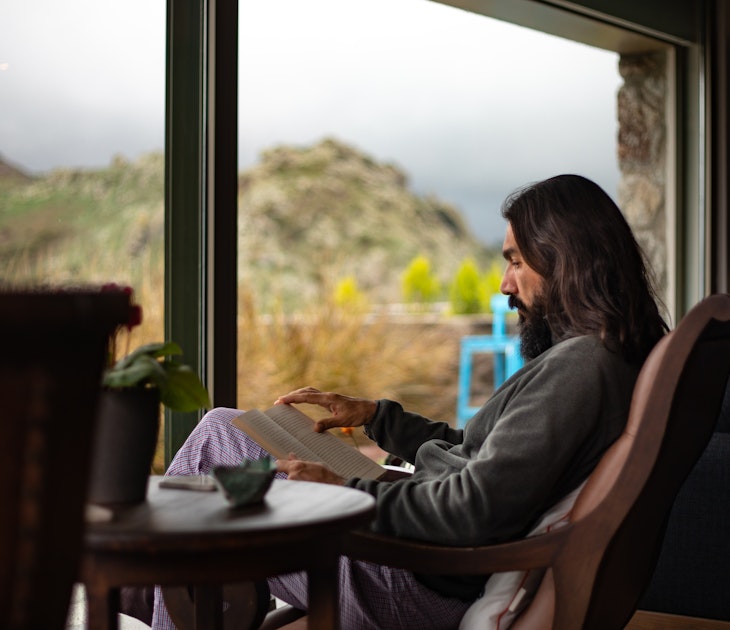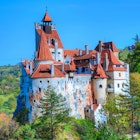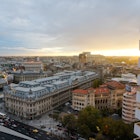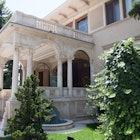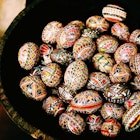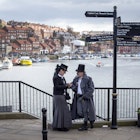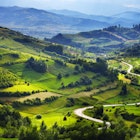There’s no shortage of things to do in Bucharest, home to Romania’s top museums, a thriving dining and nightlife scene, and pleasant parks and gardens. But for a deeper insight into the country, some impressive destinations are within day-trip reach – from one of Europe’s most beautiful castles and Count Dracula’s infamous fort, to a tranquil lakeside retreat and misty mountaintops in the Carpathians.
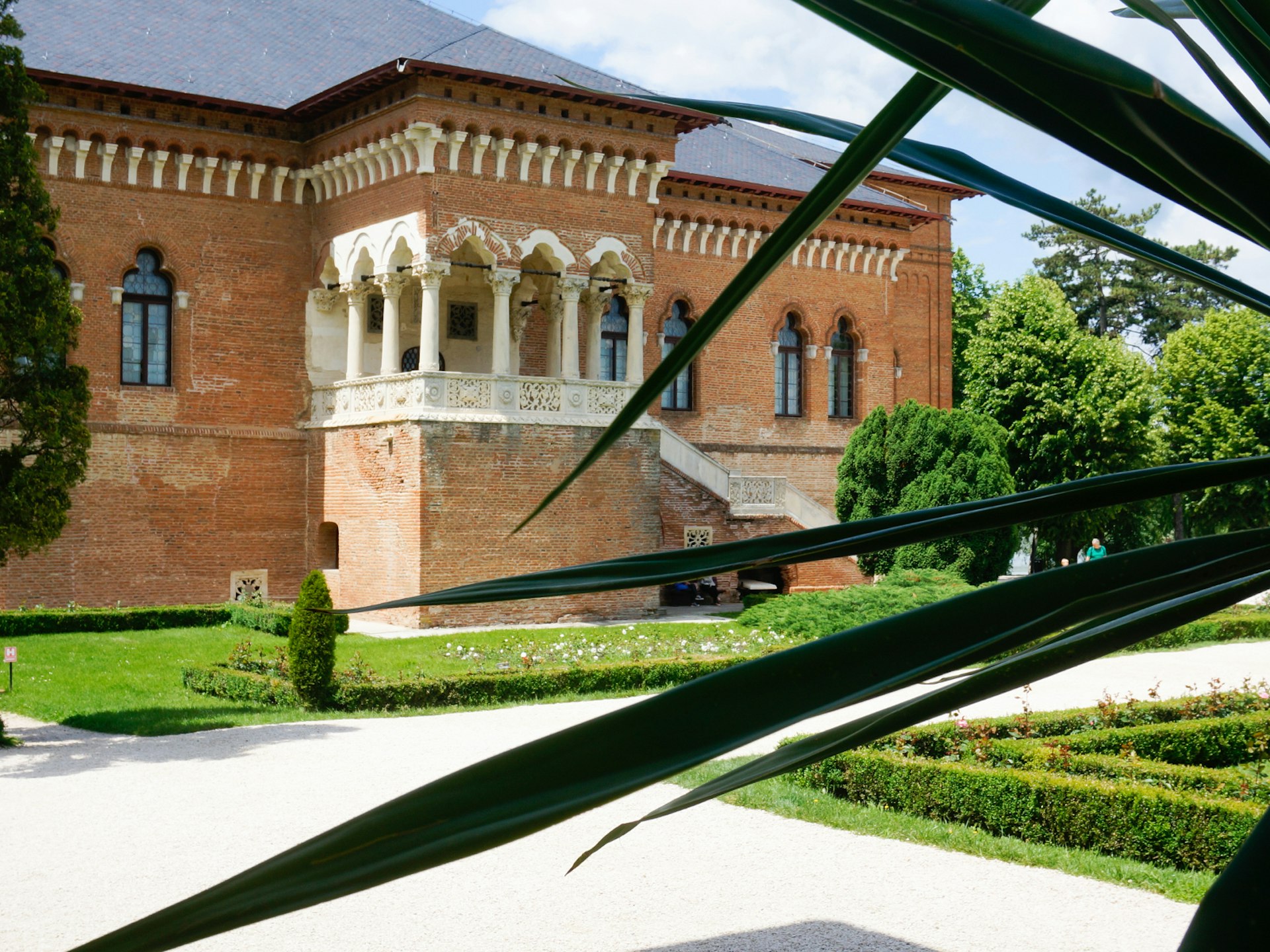
Discover the Brâncovenesc style at Mogoşoaia Palace
For the closest escape from an ever-bustling Bucharest, head some 15km northwest to Mogoşoaia Palace. Completed in 1702 under the rule of Constantin Brâncoveanu, Prince of Wallachia under the suzerainty of the Ottoman Empire, the grounds of the palace make for a tranquil weekend getaway.
Despite the tragic fate of the prince and his four sons (all beheaded at the order of the Ottoman sultan), his legacy as a celebrated patron of culture has spanned centuries, giving rise to the Brâncovenesc style seen on the estate. A symbiosis of Byzantine, Ottoman, Italian Renaissance and baroque architecture, the style is still present today in many churches, monasteries and palaces built across Romania during his reign, such as the Unesco World Heritage Site of Horezu Monastery.
Bearing the name of the widow of a local nobleman called Mogoş, the palace is part of a larger architectural complex that served as a royal residence, operated as an inn, and now houses the Museum of Brâncovenesc Art which can be visited. Come for a chance to admire the hand-carved doors and vaulted ceilings of this medieval edifice and to stroll around the manicured gardens and a lake. Pack a blanket and a picnic basket to fully enjoy an unhurried day on the estate. Don’t miss the panoramic view from the balcony of the gate tower and the 17th-century church dedicated to St Gheorghe right outside the gate.
Getting there: The quickest and easiest way to reach the palace is by taxi, or you can take regional buses R474 and R436. It’s also a popular destination for cyclists.
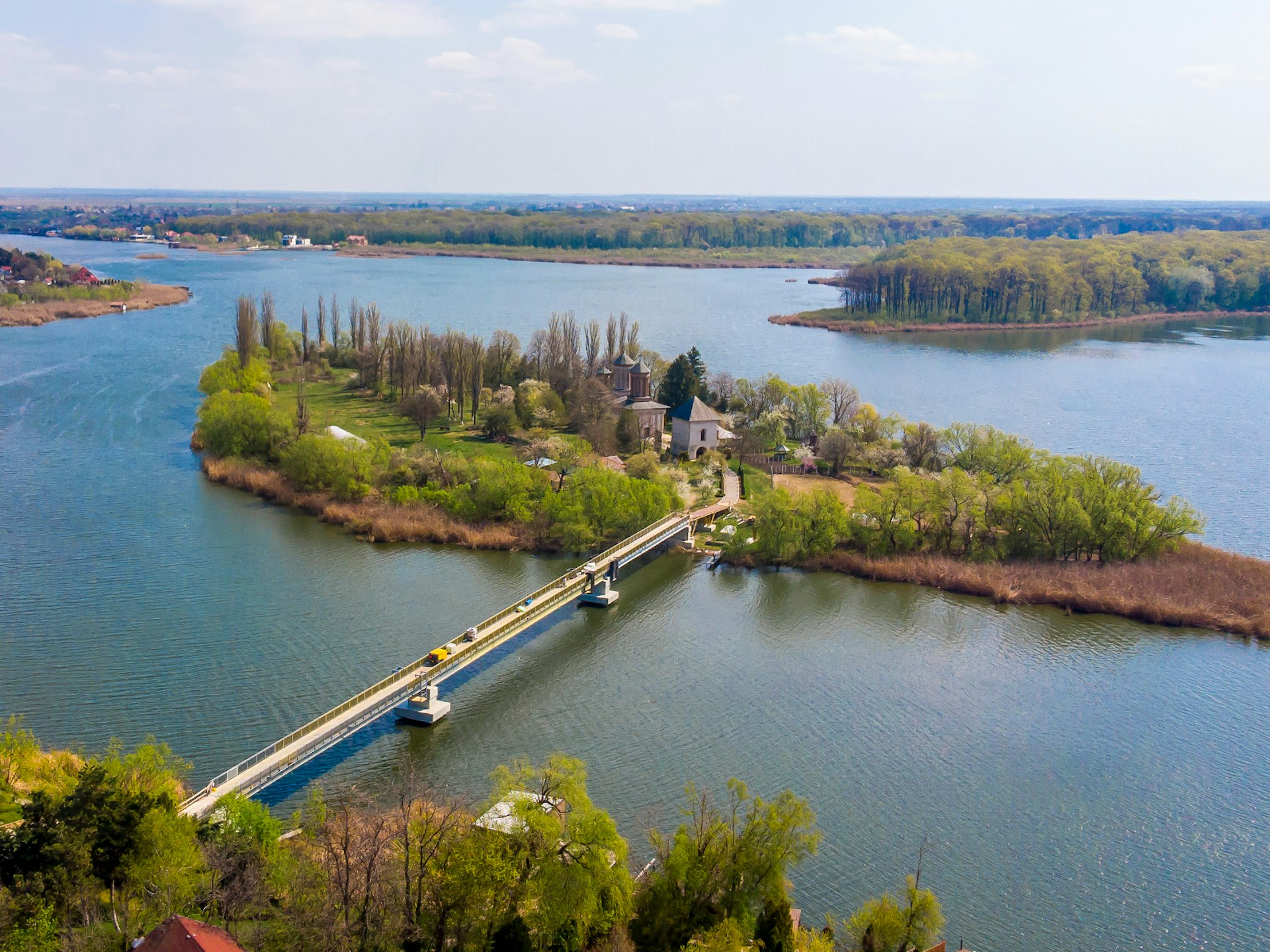
See the alleged tomb of Vlad the Impaler in Snagov
A local favourite as a weekend retreat from the hubbub of the capital, Snagov is located 40km north of Bucharest. With its lake and forest grounds, this is one of the most popular choices for posh countryside villas as well as holiday resorts. The forest is the biggest remaining part of Codrii Vlăsiei, the large woodland that once surrounded southern Romania including parts of today’s Bucharest.
During the warmer months, Snagov Lake is particularly enticing with options for swimming, boating, fishing and other water sports. At the northern end of the lake, a small island that’s home to the 15th-century Snagov Monastery holds an unexpected surprise. It claims to be the final resting place of Vlad Ţepeş (widely referred to as Vlad the Impaler), the ruthless Wallachian prince who inspired Bram Stoker’s Dracula.
On the western shore of the lake, the impressive neo-Renaissance Snagov Palace graces the grounds. A former royal palace from the 1930s, it’s now used for lavish events and state visits.
Getting there: As Snagov is more off the beaten path than Mogoşoaia, public transport is not as readily available. A maxi-taxi from Piaţa Presei Libere can take you into Snagov village.
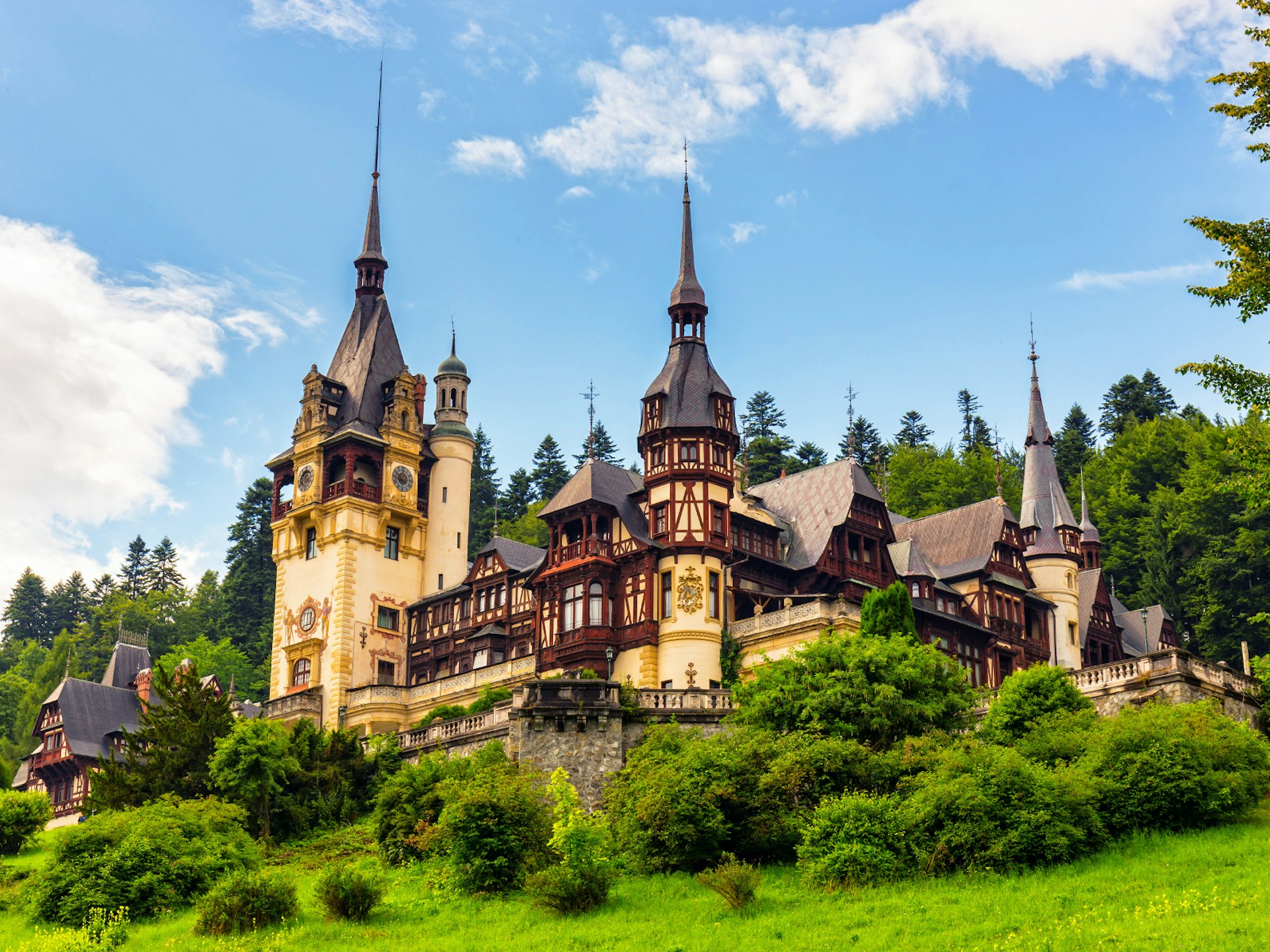
Step inside the royal castle in Sinaia
A mountain resort at the foot of Bucegi Mountains, teeming with hikers during summer and skiers during winter, Sinaia is historically known as the summer residence of the Romanian royal family. Built in neo-Renaissance style by German architects, Peleș Castle is one of Europe’s most beautiful castles, an architectural masterpiece in scenic Prahova Valley on the medieval route that once connected the principalities of Wallachia and Transylvania. Commissioned by Romania’s first king, Carol I, in 1875, the interiors are lavishly decorated and feature an impressive art collection. You can also visit the smaller Pelișor Castle, residence to King Ferdinand and his more popular wife Queen Mary. Both can be visited during a 40-minute compulsory guided tour.
Throughout the year you can take the cable car up, stopping at both 1400m and 2000m for sweeping mountain views, hiking trails and skiing pistes as well as restaurants. Back in town, go for a walk in Dimitrie Ghica park; it’s home to the elegant Casino, one of Sinaia’s best-known landmarks, and composer George Enescu’s summer residence, now open as a memorial museum.
Getting there: Catch a train from Bucharest’s Northern Railway Station to Sinaia Royal Station; the trip takes around 90 minutes.

Adventure to Dracula’s Castle in Bran
Luring visitors with its aura of mystery and enthralling vampire folklore, Bran Castle is a worthy excursion even though it’s a longer trip from the capital. Perched on a 60m-high rock, it doesn’t fail to impress with its medieval towers and green mountainous surrounds, even if the myth created thanks to Bram Stoker’s Dracula is exactly that – just a myth.
Although the author never set foot in Transylvania, extensive research and his own vivid imagination led to creating the dark tale of Count Dracula and earmarking Bran Castle as home of the real-life figure of Prince of Wallachia (aka Vlad the Impaler), who was the inspiration for the novel. In reality, Poienari Citadel (located about two hours west) served that purpose. Despite the legend, the castle continues to fascinate sightseers even if no vampires are to be found. Apart from some Dracula-themed displays, the inside of the castle is mostly dedicated to the memory of Queen Marie. A royal residence between 1920 and 1957, Bran Castle was a gift from the Council of Braşov to the queen as gratitude for her efforts in uniting Romania in 1918. Inside, you can see vast collections of furniture, ancient armour and art collected by the queen, with narrow winding stairs leading through some 60 rooms and underground passageways.
Don’t miss the view of the castle’s courtyard as well as the scenic Bran village from the top. There’s also an open-air Ethnographic Museum showcasing Romanian farmhouses and peasant homes, traditional objects and costumes.
Getting there: The easiest way to reach Bran from the capital is with your own wheels. Alternatively, buses run half-hourly from Braşov’s Autogara 2 to Bran-Moeciu de Jos, and the trip takes around 45 minutes. To reach Braşov from Bucharest, take an IC (Inter-City) train from the Northern Railway Station into the Braşov Train Station; it takes around two and a half hours.
https://shop.lonelyplanet.com/products/romania-bulgaria-travel-guide-7


